The Holy See of Tây Ninh and the Unique Spiritual Space of Caodaism
The Holy See of Tay Ninh is the most important religious structure in the belief system of Caodaism
Information to The Holy See of Tay Ninh
Geographical Location
The Holy See of Tây Ninh, also affectionately called the Sacred Temple (Đền Thánh) by locals, is located in the center of Hòa Thành town, about 6 km from Tây Ninh City.
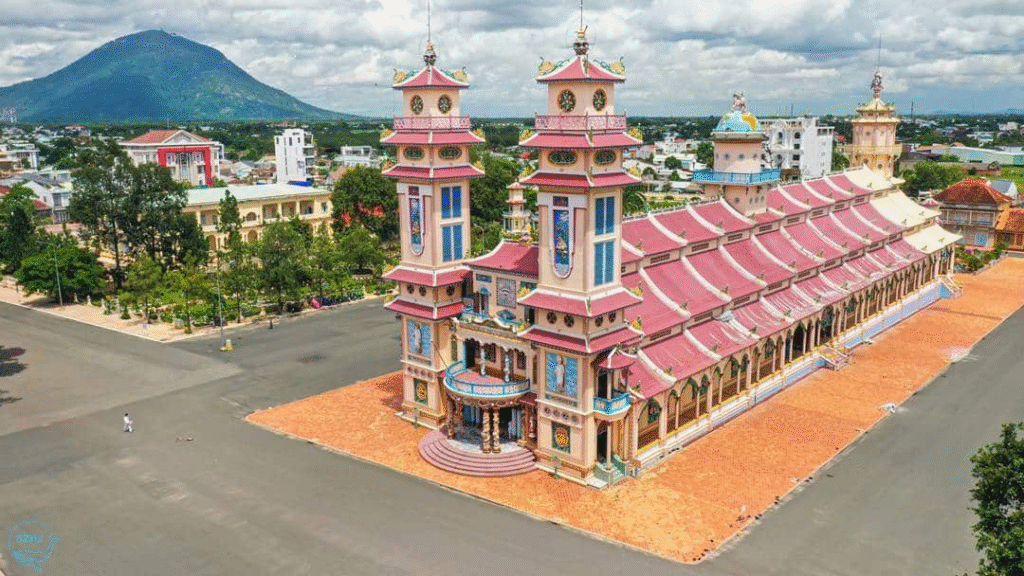
The Holy See of Tây Ninh – A Symbolic Structure of Caodaism
Caodaism, formally known as the Great Way of the Third Universal Redemption (Đại Đạo Tam Kỳ Phổ Độ), was founded in 1926 in Tây Ninh by a group of officials, intellectuals, landowners, and bourgeoisie. It is primarily practiced in southern Vietnam. A distinctive feature of this belief system is its selective integration of teachings from various religions, guiding people toward self-cultivation and nurturing virtuous conduct in daily life. This philosophy is also reflected in the architecture of the Holy See of Tây Ninh, which incorporates elements from many religions around the world.
Specifically, the Holy See impresses visitors with its two tall bell and drum towers, reminiscent of Catholic church bell towers. At the center of the Holy See stands the image of Maitreya Buddha in peaceful meditation. Additionally, the architecture also recalls the circle-and-square concept of Confucian cosmology, symbolizing heaven and earth.
In essence, the Holy See of Tây Ninh embodies a synthesis of unique architectural styles drawn from the world’s major religions. The doctrine of Caodaism represents a journey back to the origins of three great traditions: Confucianism, Taoism, and Buddhism, while also embracing the four branches of the Great Way: Humanism (Nhơn Đạo), Theism (Thần Đạo), Taoism (Tiên Đạo), and Buddhism (Phật Đạo).
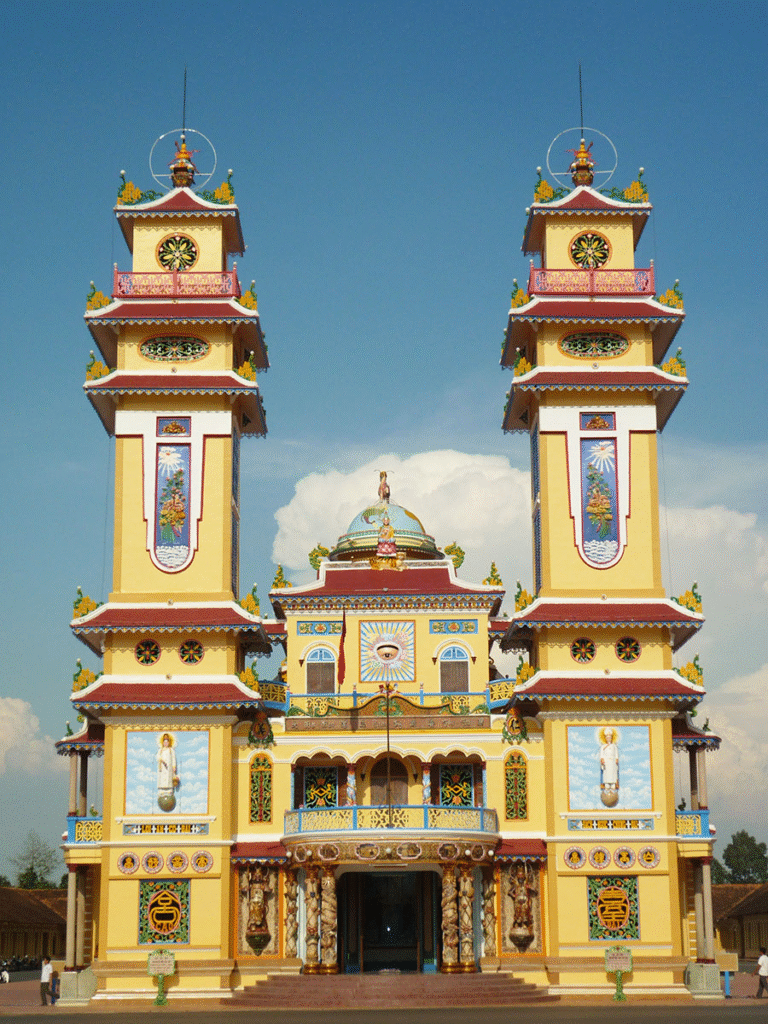
Caodai Sects and Organizations
- Caodai Tây Ninh: The largest sect, origin of the religion, builder of the Holy See of Tây Ninh with a tight organizational system. Officially recognized in 1997; currently has over 1 million followers across 35 provinces.
- Caodai Ban Chỉnh đạo (Bến Tre): Founded in 1934 by Cardinal Nguyễn Ngọc Tương and Lê Bá Trang. Strongly tied to national struggles and the revolution. Officially recognized in 1997.
- Caodai Tiên Thiên: Originated in 1920, with three pontiffs associated with patriotic movements. Recognized in 1995; currently about 100,000 followers.
- Caodai Minh Chơn đạo (Cà Mau): Established in 1928, emphasizes “humanity,” charity, and social solidarity. Recognized in 1996; about 30,000 followers.
- Caodai Truyền Giáo (Đà Nẵng): Founded in 1956, advocates “pure selflessness and morality,” actively promoting unity among sects. Recognized in 1996; about 50,000 followers.
- Caodai Cầu Kho Tam Quan: Formed in 1937; recognized in 2000. Currently about 9,000 followers.
- Caodai Chiếu Minh Long Châu (Hậu Giang, Cần Thơ): Established in 1928, once served as a base for resistance during the Vietnam War. Recognized in 1996; about 3,000 followers.
- Caodai Chơn Lý (Mỹ Tho): Founded in 1932, distinctively worships the “Heart Eye” instead of the “Divine Eye.” Recognized in 2000; more than 6,000 followers.
- Caodai Bạch Y (Kiên Giang): Appeared in 1936, contributed significantly to patriotic activities. Recognized in 1998; about 5,000 followers.
- Caodai Việt Nam (Bình Đức, Tiền Giang): Established in 1961, promotes the rejection of superstition and preservation of traditional customs. Recognized in 2011; about 5,000 followers.
- Caodai Chiếu Minh Tam Thanh Vô Vi (Cần Thơ): Founded by Ngô Văn Chiêu in 1927, emphasizes solitary spiritual cultivation without establishing a formal church. Recognized in 1999; about 3,000 practitioners.
The Unique Architecture of the Holy See of Tây Ninh
Architecture Blending Eastern and Western Philosophies
Ninety-four years ago, construction of the Holy See began, five years after Caodaism was founded. Early leaders chose a 50-hectare forest in Long Thành village, Hòa Thành district (5 km from Tây Ninh City), believed to be a sacred “dragon vein,” located at the convergence of six underground water streams known as “lục long phò ấn” (six dragons guarding the seal), to ensure peace and protection for the land and its people.
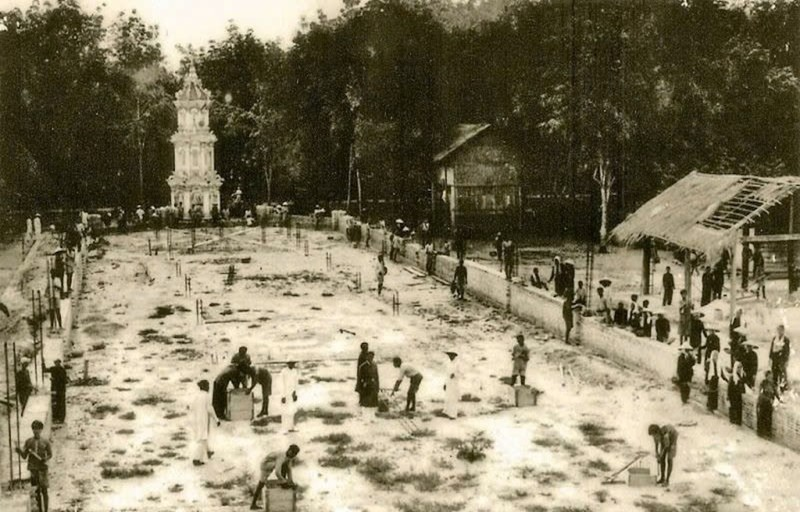
Unlike most religious buildings designed by professional architects, the Holy See of Tây Ninh was directed by Hộ Pháp (Defender of the Faith) Phạm Công Tắc, one of Caodaism’s founders, without blueprints or engineers. Construction relied entirely on the voluntary labor of Caodai followers. Remarkably, workers even refrained from marrying during construction, fearing it might disturb the building’s yin-yang balance. Hộ Pháp supervised closely, accepting input from followers to create the most harmonious design. After five years, the Holy See was completed.
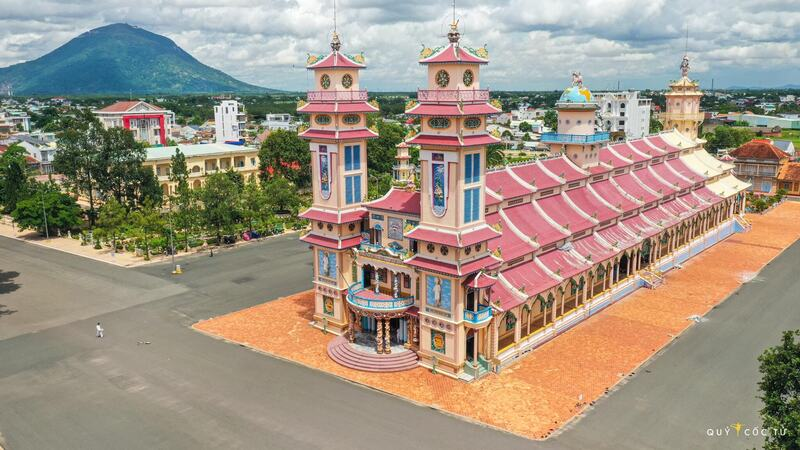
The Holy See reflects the harmony between heaven, earth, and humanity. It stands as both a symbol of Tây Ninh’s cultural-religious identity and a sacred space for worship and ceremonies of Caodai believers.
The Outer Grounds of the Holy See
The complex covers an area of 12 km², surrounded by a protective fence emphasizing its sanctity. Within the grounds are smaller structures such as the Mother Goddess Temple and stupas. Its two iconic towers, each 36 meters high, are the most prominent features.
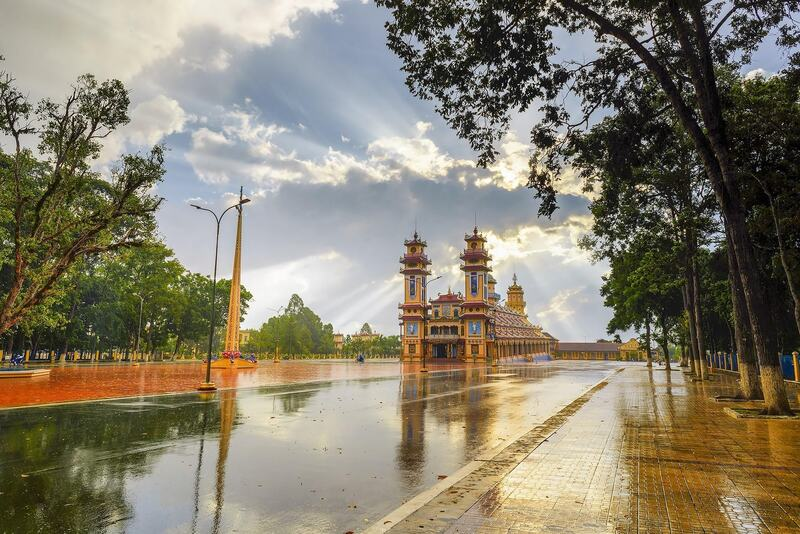
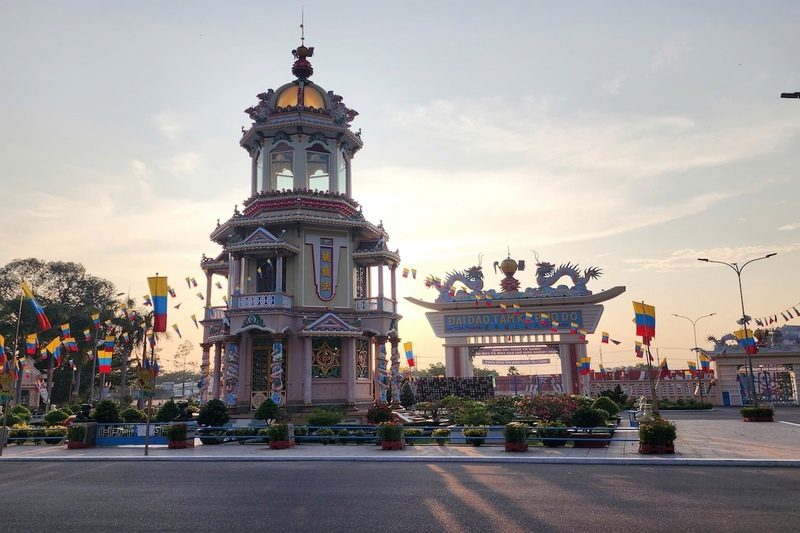
The Holy See is about 100 meters long and features 12 doors, the largest being the Main Gate (Chánh Môn). Each door is intricately carved with four sacred animals and lotus motifs, while the Main Gate is decorated with the dragon-chasing-pearl symbol.
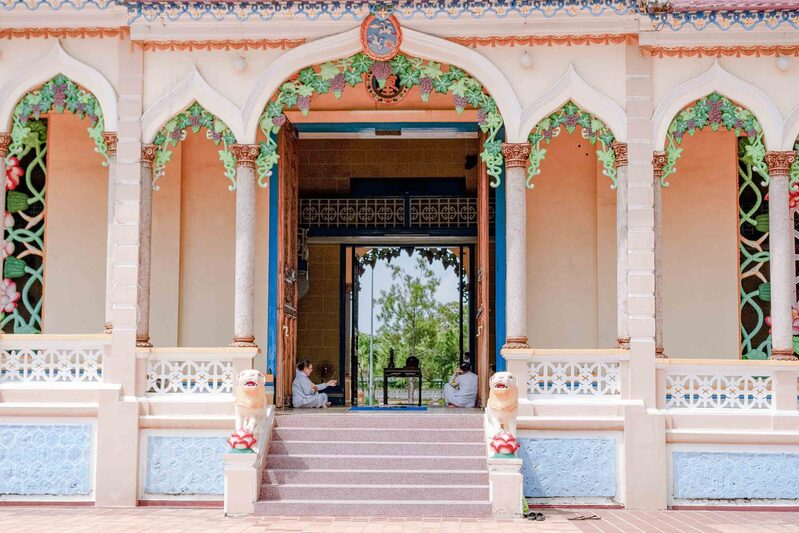
The roof design alternates between covered and uncovered sections, creating both contrast and balance. Interestingly, though located in southern Vietnam, the Holy See’s style bears strong resemblance to northern Vietnamese pagodas. The entrance gate is divided into three passages, similar to the triple-gate (Tam quan) design in Buddhist temples.
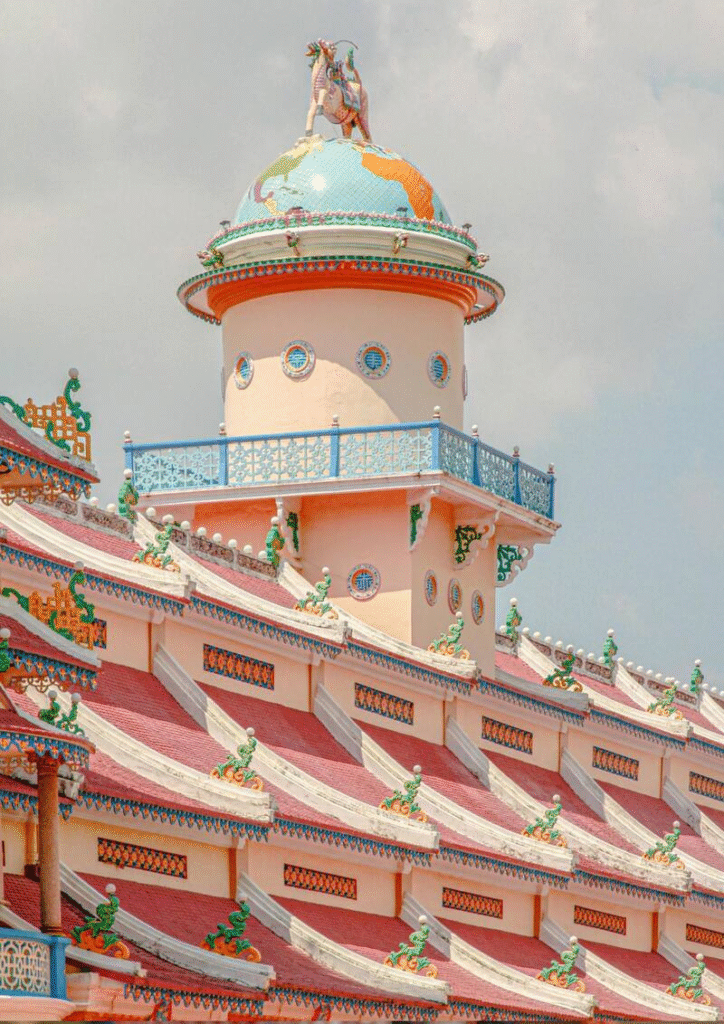
The Interior Splendor
Inside, visitors are awed by the intricate carvings on ceilings and walls, showcasing the dedication and artistry of Caodai devotees. Two rows of pillars are adorned with dragons and phoenixes painted in vibrant colors.
The floor is divided into nine levels, called the “Cửu phẩm thần tiên” (Nine Ranks of Deities), each symbolizing a stage of spiritual advancement.
At the center stands a giant globe symbolizing the universe and the Caodai worldview. This is also a favorite backdrop for visitors. Another striking feature is the Divine Eye (Thiên Nhãn)—a large, finely carved eye symbolizing enlightenment and divine wisdom.
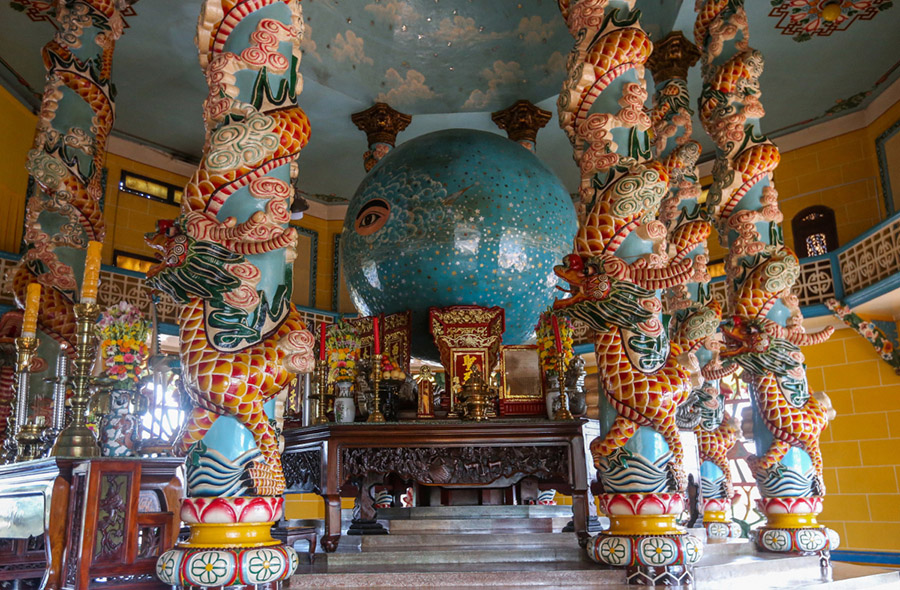
Conclusion
The Holy See of Tây Ninh is not only the spiritual center of Caodaism but also a rare cultural-religious landmark in Vietnam. It embodies the philosophy of “Three Teachings from one source” (Tam giáo đồng nguyên), blending elements of major world religions while reflecting the Vietnamese aspiration for virtue and community unity. With its unique architecture, historical depth, and profound spiritual values, the Holy See of Tây Ninh is both a sacred place of worship for Caodai followers and an exceptional destination for visitors to experience one of the most distinctive spiritual spaces of southern Vietnam and the entire country.
Book a Once-in-a-Lifetime Experience with us
OUR EXPERIENCES
Ao Dai Motorbike Tours Cu Chi Tunnels Excursions Ho Chi Minh Day Trips, and Combos Mekong Delta Adventures Saigon: Culture & History Saigon Street Food Southern Vietnam Coastal Adventures Taste Of Saigon Tours
Don’t leave just yet—stay with us a bit more!

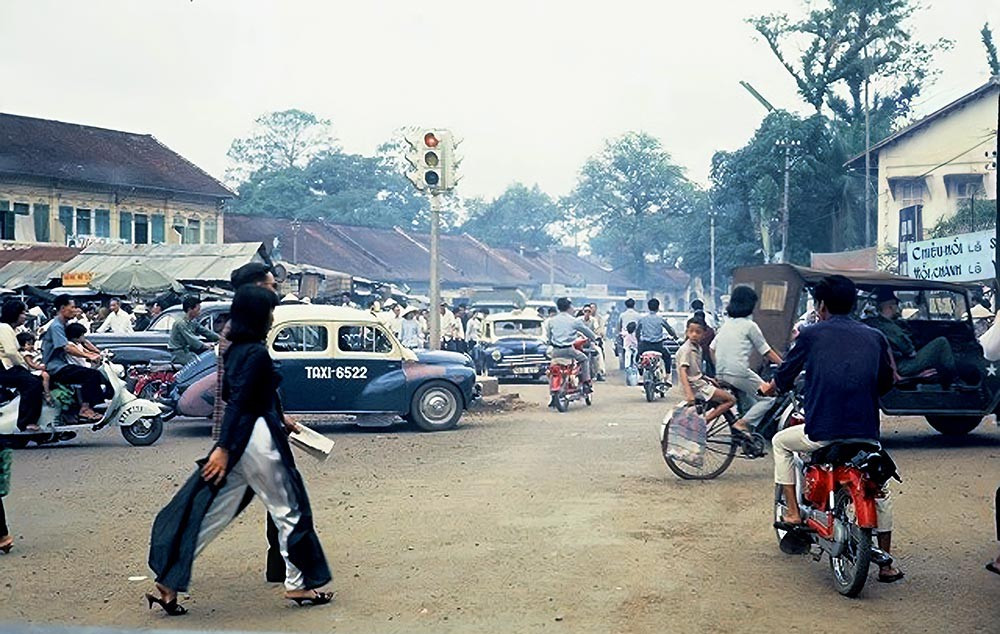

Leave a Reply